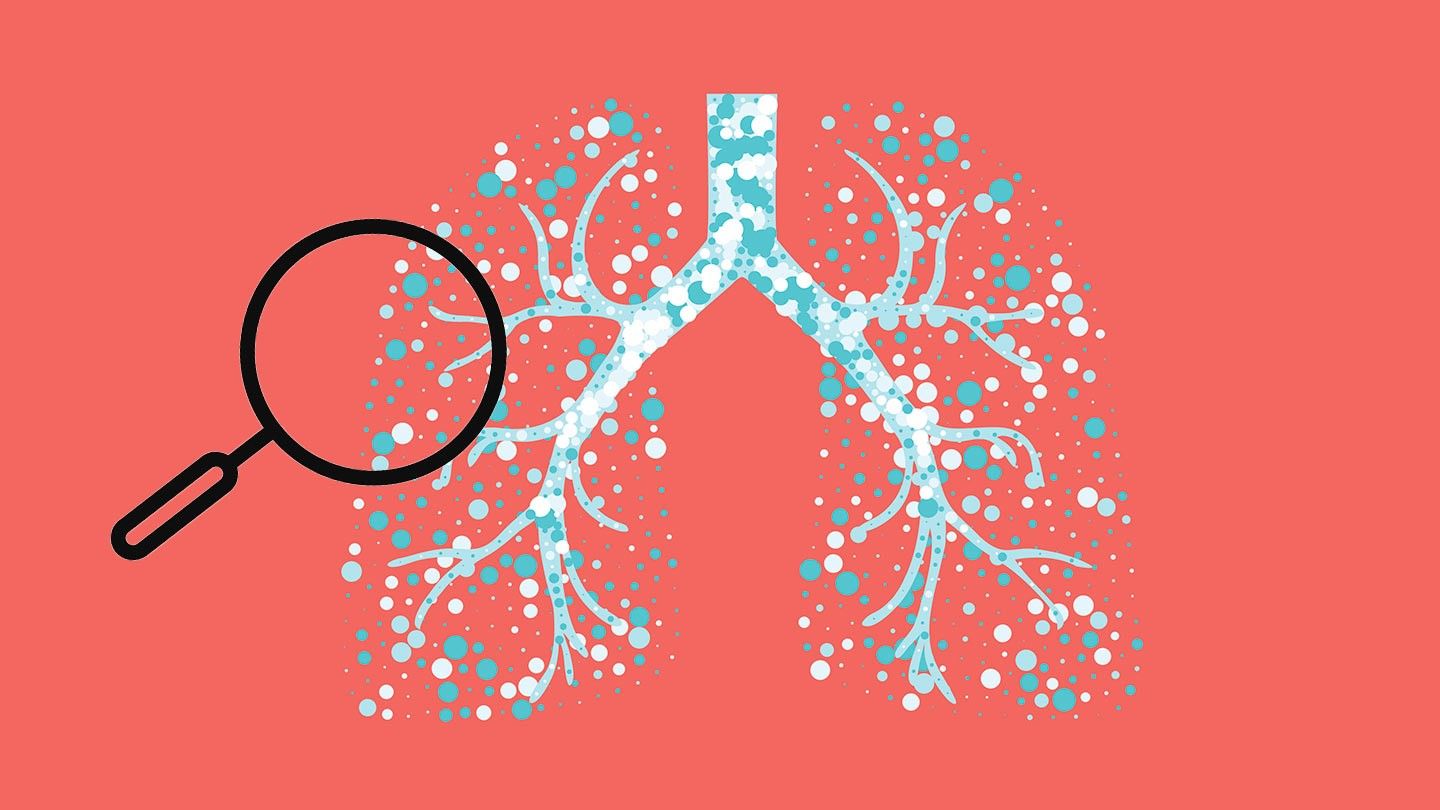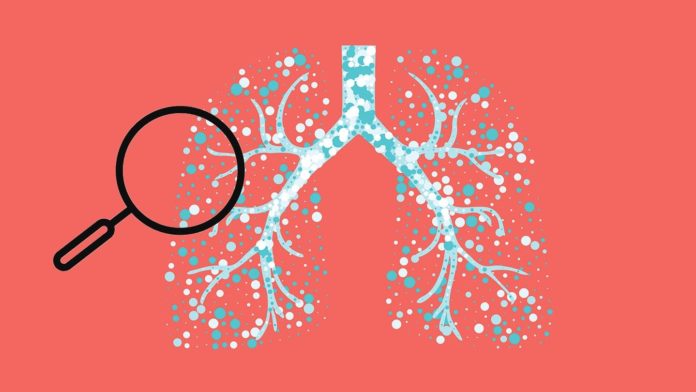Asthma is a common chronic (long-term) lung disease in which the lungs' bronchial tubes, or airways, become inflamed.
Want to know more about asthma? Read on to learn what experts know about this breathing disorder, why some people develop it and others don’t, lifestyle changes that can help you manage asthma, and how to avoid complications linked to the condition.
Do You Know What Type of Asthma You Have?
Asthma is a disease that affects your airways, which carry air in and out of your lungs. The type of asthma you have depends on your specific triggers.
Thanks to advances in asthma research, doctors have been able to identify the different types of asthma. The five most common types of asthma are: exercise-induced bronchospasm (EIB), allergic asthma, cough-variant asthma, occupational asthma, and nocturnal or nighttime asthma. EIB occurs after physical exertion. It’s not always easy to determine which type of asthma you have. Proper diagnosis and regular communication with your doctor can help you to determine the best course of action.
Asthma is a chronic lung disease, so it’s important to receive treatment as soon as possible to ensure that your condition doesn’t worsen.
Learn More About the Types of Asthma
Signs and Symptoms of Asthma
Coughing? Wheezing? Chest pain? If these symptoms sound familiar, it might be asthma, a chronic disease that inflames the airways (bronchial tubes) that carry air in and out of the lungs.


How to Tell If You Have Asthma
When something triggers your asthma symptoms, the membrane lining your airways swells, the muscles around the tubes constrict, and the airways fill with mucus. As these tubes narrow it becomes more difficult to breathe, causing symptoms such as wheezing and coughing, congestion, shortness of breath, and chest tightness or pain. If you have asthma, performing normal daily activities can be strenuous, and it may take longer to recover from a respiratory infection, such as a cold or flu.
An asthma attack or flare-up is a sudden worsening of these symptoms, including severe wheezing, uncontrollable coughing, rapid breathing, sweating, and anxiety. These symptoms require immediate medical attention.
But not everyone experiences asthma in the same way. Symptoms vary from person to person, can change with age, differ between attacks and may intensify during exercise, with a cold, or under periods of elevated stress.
Learn More About Signs and Symptoms of Asthma
Causes and Risk Factors of Asthma and Asthma Attacks
It's unknown what exactly causes asthma, but scientists believe that both genetic and environmental factors play a role in the development of the disease.
Why Do You Have Asthma?
Having respiratory infections during infancy or early childhood is another risk factor for asthma. These infections can cause inflammation in the lungs and can damage lung tissue, affecting lung function later in life.
What Triggers an Asthma Attack?
Numerous triggers can cause asthma attacks, including:
Tobacco smoke While smoking is unhealthy for anyone, it’s particularly dangerous for people with asthma. If you smoke, you should quit.
Secondhand smoke can also trigger an asthma attack. Avoid situations in which people around you smoke. Also don't let people smoke in a place where you spend a lot of time, such as your home or car — even if you're not present when they smoke.
Smoke from wood or grass Even though it may seem “natural,” smoke from these sources contains harmful gases and particles.
Avoid burning wood in your home. If you live in an area where wildfires occur, monitor air quality forecasts and try to stay inside when particle levels are at their worst.
Certain foods and food additives While almost any food can cause an allergic reaction, a few additives (like sulfites and other preservatives) are widely believed to cause adverse reactions in some people.
Acid reflux can also trigger an asthma attack in some people, so any food that aggravates this condition may also be responsible for symptoms.
Respiratory infections These include influenza (flu), the common cold, respiratory syncytial virus (RSV), and sinus infections.
Learn More About Causes of Asthma and Asthma Attacks: Common Risk Factors, Genetics, and More
How Is Asthma Diagnosed?
If you notice yourself having trouble breathing, wheezing, or having chest tightness, let your doctor know so he or she can determine if you have asthma or if something else is wrong. In some cases your primary care provider will refer you to a specialist for a diagnosis.


Choosing an Asthma Doctor: Who Are the Specialists You May Need?
Learn More About Diagnosing Asthma: Tests and Screenings, Early Diagnosis, and Your Doctors
Treatment and Medication Options for Asthma
There is no cure for asthma, but you can alleviate and prevent your symptoms through quick-relief and long-term control medication. Long-term control medication works to reduce inflammation to make your airways less sensitive to asthma triggers. It’s usually taken daily through an inhaler or as an oral pill. Quick-relief medicines help to relieve symptoms when they happen, relaxing the tight muscles around your airways and easing the flow of air.


A Consumer’s Guide to Drug Discounts
The updated guidelines also recommend a type of drug called a long-acting muscarinic antagonist to improve symptoms for these age groups. And for young children (up to age 4) who wheeze only when they have a respiratory tract infection (regardless of whether or not they’ve been diagnosed with asthma), the new guidelines recommend a short course of inhaled corticosteroids plus a rescue inhaler as needed. This can prevent worsening of breathing problems and forestall the need for corticosteroid pills.
Most asthma medications are breathed in through the use of an inhaler or nebulizer. There are two main types of inhalers; a metered dose inhaler (MDI), which uses a pressurized medicine-filled canister, and a dry powder inhaler (DPI), containing medicine in powdered form. A nebulizer uses a mask and delivers medication as a mist. It’s important to learn the different techniques for using these devices to ensure the medicine reaches your lungs.
There are few evidence-backed natural remedies for asthma, particularly if your case is severe. But lifestyle changes, like controlling stress, and some complementary therapies, like acupuncture, may help manage symptoms.
Learn More About Treatment for Asthma: Medication, Alternative and Complementary Therapies, and More
Prevention of Asthma
Doctors aren’t sure why asthma develops in the first place. The condition seems to stem from a mixture of genetic and environmental factors. That said, there are established risk factors for asthma. Avoiding them may lower your risk for developing the disease.
- Follow your doctor’s instructions when it comes to taking your medication and avoiding your asthma triggers.
- Get vaccinated. Viruses and infections can trigger flare-ups. You can lower your odds of developing one of these triggers by getting your seasonal flu shot and other scheduled vaccinations.
- Monitor your asthma. Keeping tabs on your condition using a peak airflow meter can help you spot and head off impending flare-ups.
- Keep an eye out for warning signs. A cough or frequent inhaler use are two signs that a bad flare-up is in the cards. Recognizing these sorts of red flags can help you take steps to prevent a bad attack.
Complications of Asthma
For most people with asthma, using medications (like inhaled corticosteroids) and making certain lifestyle changes (like quitting smoking and maintaining a healthy weight) will allow them to manage their symptoms and avoid most short- and long-term complications.
Learn More About the Complications of Asthma: How It Affects Your Body in the Short and Long Term
BIPOC Communities and Asthma
The causes driving these disparities are multifactorial.
"Poverty, exposure to pollution, and limited access to medical care play a big role in racial disparities in asthma," says Kenneth Mendez, AAFA's president and CEO.
"These factors are interrelated and intergenerational,” he explains. Discriminatory housing policies, for example, have caused long-lasting residential segregation, in which poverty is concentrated in Black and Hispanic communities, which then perpetuates a cycle of limited access to education, employment, and quality healthcare services, he says. This residential segregation is also responsible for the disproportionate proximity of minority populations to sources of pollution, such as industrial centers, major roadways, oil and gas refineries, distribution hubs, and traffic-related pollution, which can put people at higher risk for asthma and having worse outcomes, Mendez explains.
- While the asthma rate among white Americans is about 7.6 percent according to the AAFA report, it’s 10.6 percent among Blacks and 14.9 percent among Puerto Ricans — the highest rate among all racial and ethnic groups.
- The number of asthma deaths per one million people is highest for Black Americans, at 23.9, followed by Puerto Ricans at 21.8, Hispanic Americans at 8.4 and white Americans at 7.4.
- Emergency-room visits for asthma — a sign of asthma that’s not well-controlled — were five times higher for Black Americans compared with white Americans in 2017. The rate was 164.3 ER visits per 10,000 people for Black Americans, compared with 33.9 for white Americans. According to the U.S. Department of Health and Human Services Office of Minority Health, Hispanic Americans are twice as likely to visit the ER for asthma compared with non-Hispanic white Americans.
- There’s little data on asthma’s effects in indigenous communities in the United States, but the AAFA report states that “tribal nations have among the highest rates of asthma prevalence, morbidity, and mortality.”
Conditions Related to Asthma
Asthma can be associated with several other conditions and health problems. In some cases, asthma can increase the likelihood of certain illnesses, like:
- Bronchitis
- Pneumonia
Additionally, there are some illnesses and health conditions that appear to be linked to asthma in that people with one are more likely to have the other, like:
- Allergies
- COPD
- Emphysema
- Sleep apnea
Resources We Love
Favorite Orgs for Essential Asthma Info
American Academy of Allergy, Asthma & Immunology
This U.S.-based international organization is committed to educating people and doctors about asthma and related conditions. It publishes academic journals and funds research about asthma, and its website offers helpful resources covering every aspect of the condition.
American College of Allergy, Asthma & Immunology
This association of doctors is committed to helping people with asthma find knowledgeable experts in their area. It also provides helpful resources on managing asthma and its symptoms.
American Lung Association (ALA)
One of the country’s leading lung-health organizations, the ALA employs scientists and researchers who study asthma in order to improve care for those with the disease. It also provides useful public education materials about asthma and other lung conditions.
Asthma and Allergy Foundation of America
This nonprofit organization was started to help people with asthma learn about and manage their condition. It helps fund research on asthma, and it provides a wealth of information about the condition and the best ways to manage it.
The Cleveland Clinic
This Ohio-based medical institution offers helpful educational resources that explain asthma causes, symptoms, treatment options, and other facets of the disease. The Cleveland Clinic also has doctors and facilities that can help people with asthma manage their condition.
Mayo Clinic
Learn about common asthma symptoms and treatments — and a lot more — from one of the country’s preeminent medical institutions. You can also connect with Mayo Clinic doctors and clinicians for treatment options.
Favorite Blogs About Living With Asthma
Asthma Allergies Children
The Asthma Allergies Children blog is the work of two physicians, both trained in allergies and immunology. The blog covers topics like medication adherence, cost of care, doctors’ pet peeves, integrative medicine, new research, and other news. (Note that the blog covers allergies and other immune disorders, as well as asthma.) For timely takes on noteworthy topics, check it out.
BreathInStephen
Stephen Gaudet was born with severe asthma more than 60 years ago and started his blog back in 2004. The blog chronicles the trials and tribulations asthma has caused him, as well as the victories. To date, Gaudet has completed 21 races and nine marathons (he walks because he does not have the lung capacity to run). Read more about his debilitating diagnosis and how he has overcome it.
Additional reporting by Sari Harrar.


Editorial Sources and Fact-Checking
- Asthma. National Heart, Lung, and Blood Institute. September 18, 2014.
- Most Recent National Asthma Data. Centers for Disease Control and Prevention (CDC). March 24, 2020.
- Chunk K, et al. International ERS/ATS Guidelines on Definition, Evaluation, and Treatment of Severe Asthma. European Respiratory Journal. January 31, 2014.
- What Is Severe Asthma? Asthma UK. October 2014.
- Severe (Acute) Asthma Definition. American Academy of Allergy, Asthma & Immunology.
- Settipane RA, Bellanti JA. The Atopic Disorders and Atopy … “Strange Diseases” Now Better Defined! Allergy and Asthma Proceedings. July–August 2017.
- What Causes Asthma? American Lung Association. February 28, 2019.
- What Causes or Triggers Asthma? Asthma and Allergy Foundation of America. October 2019.
- Common Asthma Triggers. CDC. December 14, 2010.
- Asthma Diagnosis. Asthma and Allergy Foundation of America. September 2015.
- Tuomisto L, et al. A 12-Year Prognosis of Adult-Onset Asthma: Seinajoki Adult-Onset Asthma Study. European Respiratory Journal. October 2015.
- Will My Child Outgrow Asthma? Mayo Clinic. February 8, 2017.
- Asthma: Outlook/Prognosis. Cleveland Clinic. June 8, 2017.
- Asthma: Symptoms and Causes. Mayo Clinic. September 13, 2018.
- Asthma Risk Factors. American Lung Association. April 29, 2019.
- Mohanan S, Tapp H, McWilliams A, Dulin M. Obesity and Asthma: Pathophysiology and Implications for Diagnosis and Management in Primary Care. Experimental Biology and Medicine. November 2014.
- How Do I Prevent an Asthma Attack? American College of Allergy, Asthma, & Immunology.
- FastStats — Asthma. CDC. February 21, 2020.
- Asthma. World Health Organization. May 20, 2020.
- Asthma Disparities in America: A Roadmap to Reducing Burden on Racial and Ethnic Minorities. Asthma and Allergy Foundation of America. September 16, 2020.
- Fitzpatrick AM, Gillespie SE, Mauger DT, et al. Racial Disparities in Asthma-Related Health Care Use in the National Heart, Lung, and Blood Institute's Severe Asthma Research Program. Journal of Allergy and Clinical Immunology. June 1, 2019.
- Mak ACY, White MJ, Eckalbar WL, et al. Whole-Genome Sequencing of Pharmacogenetic Drug Response in Racially Diverse Children With Asthma. American Journal of Respiratory and Critical Care Medicine. June 15, 2018.
- Asthma and Hispanic Americans. U.S. Department of Health and Human Services Office of Minority Health. May 13, 2017.











































